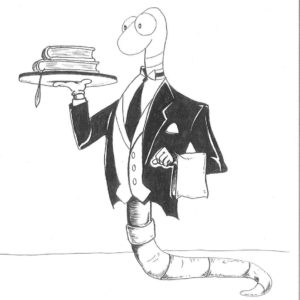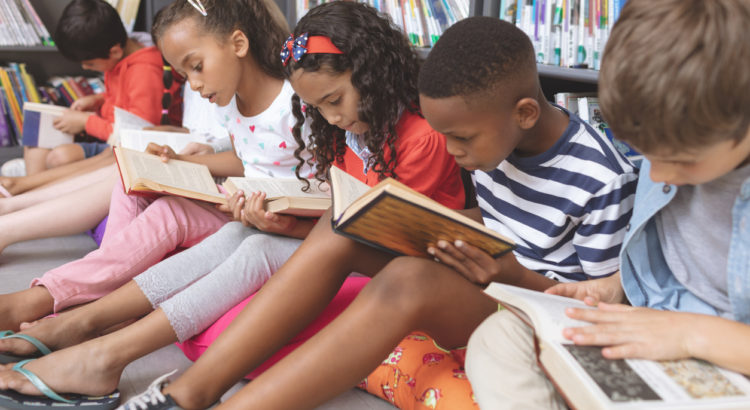Remember book fairs—that exciting week when a book store popped up at your elementary school? You perused a landscape of colorful covers and got money from your parents. The school buzzed as kids showed each other their purchases. Teachers set aside reading time and kids absorbed the fresh pages of their very own book.
Re-imagine that same week as a kid with no money.
Financial insecurity is not a burden anyone wishes a child to bear, but it is a burden on many children nonetheless. According to the National Center for Children in Poverty, 21% of all children (about 15 million) live in families with income below the federal poverty level and 43% of children live in low income families.
In her memoir, Heartland, Sarah Smarsh illuminated her childhood economic anxiety. She transferred from one elementary school to another. Eligible for the free hot lunch program, that eligibility didn’t catch up to her for months at her new school. The young Smarsh went hungry because she was too embarrassed to tell an adult she didn’t have lunch money.
I thought back to book fairs from my childhood. My memory conjured images of a classmate, face fixed tight on his desk, drawing a picture; another classmate’s face over-focused on a multiplication worksheet. Oblivious, the rest of us beamed over the glossy covers of our new books.
What if we could ease that anxiety for one fleeting moment and help a kid buy a book? Some friends and I put our heads together and developed a plan.
THE GOAL
- Give every kid who wants to buy a book at a book fair the chance to do so just like everybody else.
THE RULES
- Make it anonymous.
- This is about doing good for goodness sake. Discretion is key. Donors partner with librarians, teachers, and school administrators, so they will know us. But if a parent, student, or community member asks about it, the school should reply that the funds came from an anonymous donor, or the book fairy.
- No restrictions on book fair purchases.
- Book fairs sell posters and tchotchkes in addition to books. Resist the temptation to restrict a recipient’s purchases to books only. Kids shall not feel like a charity case or part of a special program. This means giving each kid the freedom to buy whatever he/she wants—to shop just like everybody else. Most kids will choose a book, but as one friend said, “If a kid feels they need something else at that moment, I can respect that.”
The focus is on helping a kid feel good about choosing a book they will love and enjoying it.
Friends and I pooled some money and I worked with a couple nearby elementary schools. A cash donation was converted into funny money for students to spend at the book fair. One school called it Book Fair Bucks, another school altered it to Book Fairy Bucks.
I communicated the goal and the school librarian, administrators, and teachers developed the plan. At one elementary, the school counselor identified families with high financial need and evenly distributed Book Fair Bucks to twenty students from those families. Selected students were told they had won a prize. This didn’t raise suspicion as prizes for performance, skill, and occasionally luck were common. One school principal had each teacher pick two kids who usually didn’t have money to purchase things.
At another elementary, each teacher polled their class to see how many students had attended the Family Book Fair Night. Next, teachers monitored students who purchased a book at the book fair during school hours. Then each teacher submitted the name of two students who had done neither. On the last day of the book fair, forty-one students were told they had won a $10 Book Fairy Buck to spend at the fair. (The forty-first recipient had brought a bag of pennies—not enough for a good book.)
Here are a few stories shared by teachers and librarians:
- “One of my students said he had always dreamed of being able to buy something at the book fair. After shopping, he came back and read one of his books. He then was so excited about the book, he talked all day about it—the main character and the problem in the book. I felt like I had read it after talking to him! At the end of the day he said, ‘Don’t you wish you had bought this one!’” (from a first grade teacher).
- “Elizabeth started tearing up and said, ‘How did I get so lucky?’”
- “My 2 book fairy recipients were so excited to pick out the exact same books as each other so they could read them together.”
- “A fifth grade girl turned all the way around, looking at everything in the book fair and said, ‘How does anyone decide with all these choices?’”
- “We are at 83% poverty level school-wide, and have 10 homeless children. It was great to see the big smile on their faces. Each of them chose at least one book.”
- Two brothers were pleasantly surprised to see they were both prize winners at the book fair. They got almost the same thing: a poster and some erasers. The librarian noted, “No books, even though I tried to convince them, but they were so happy!”
Feedback showed that economic anxiety is real, students will choose books more often than not when given a choice, and the program had a positive impact.
Surely we missed some children, but we’re on the right track. Studies repeatedly find a positive relationship between kids who grew up with access to books and better literacy, communication skills, and academic success. Access to books is a great equalizer and $100, $200, $400 goes a long way at a school to put books in the hands of kids who need them. If one kid learns to love reading and reaps the lifetime benefits that greater literacy sows, it’s worth it. Furthermore, book fairs are fund-raisers for school libraries, so it’s a win-win.
Contact a school, find out where the need exists, pool together some money with friends, and go make a difference.
Matt Werner

